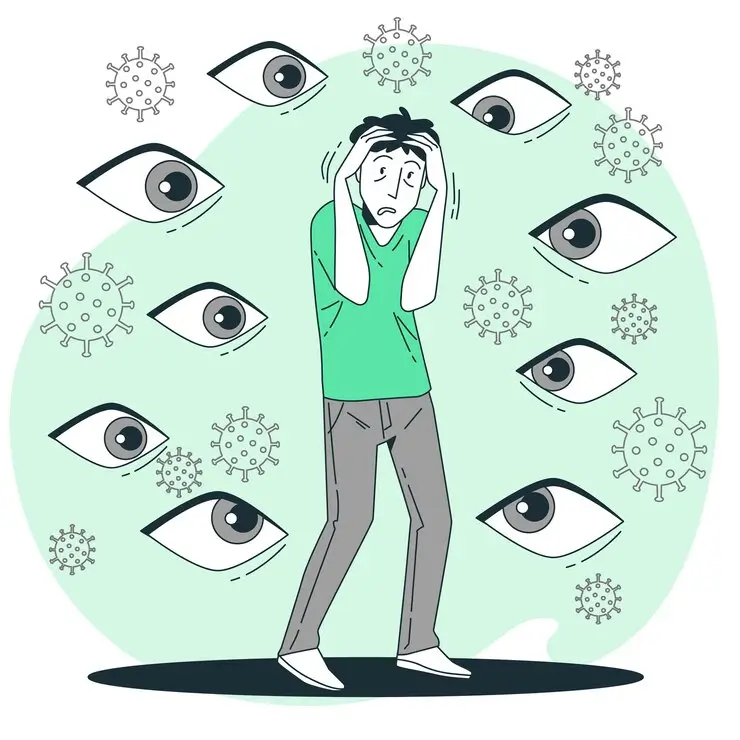Understanding The Threads Of Paranoia: A Deep Dive Into The Complex Web Of Suspicion And Fear
Table of Contents
Paranoia, a term that often conjures images of conspiracy theorists, clandestine operations, and individuals driven to the brink of their sanity. Derived from the Greek words “para,” meaning beyond, and “nous,” meaning mind, paranoia is more than just a fleeting feeling of unease; it is a complex psychological phenomenon that can have profound effects on individuals and society as a whole.
This article aims to unravel the intricate threads of paranoia, exploring its origins, manifestations, and the ways in which it impacts both the individual and the broader social fabric.
The Nature of Paranoia:
Paranoia is a state of mind characterized by intense and irrational distrust or suspicion of others. It goes beyond the normal boundaries of caution and can manifest in various forms, ranging from mild feelings of unease to debilitating delusions.
At its core, paranoia often involves a heightened sensitivity to perceived threats, leading individuals to interpret benign actions as malevolent and harmless situations as potential dangers.
Origins and Causes:
Understanding the roots of paranoia requires delving into a combination of genetic, environmental, and psychological factors. Some individuals may have a genetic predisposition to paranoia, with family history playing a role in the development of this mindset.
Childhood experiences, trauma, or a history of abuse can also contribute to the formation of paranoid tendencies. Additionally, certain mental health conditions, such as schizophrenia and bipolar disorder, are commonly associated with paranoid symptoms.
Cultural and Societal Influences:
Paranoia is not solely an individual experience but is also shaped by cultural and societal factors. In a world that is increasingly interconnected and information-rich, individuals may find themselves bombarded with a constant stream of stimuli, contributing to a heightened sense of vulnerability.
Media, both traditional and social, can play a significant role in shaping perceptions and fostering a climate of suspicion. Conspiracy theories, for example, often thrive in environments where trust in institutions is eroded.
The Paradox of Trust and Distrust:
One of the paradoxes of paranoia lies in its impact on interpersonal relationships. While individuals experiencing paranoia often harbor intense suspicions about the motives of others, they may paradoxically seek out connections and alliances to protect themselves from perceived threats.
This duality can lead to strained relationships, as the individual vacillates between a desperate need for connection and an overwhelming fear of betrayal.
Coping Mechanisms and Treatment:
Coping with paranoia can be challenging, both for the individual and those around them. Recognizing the irrational nature of their suspicions is often the first step towards recovery.
Psychotherapy, particularly cognitive-behavioral therapy (CBT), has shown efficacy in helping individuals reframe distorted thought patterns and develop healthier coping mechanisms.
Medications, such as antipsychotics, may also be prescribed in cases where paranoia is a symptom of an underlying psychiatric condition.
The Social Impact:
Beyond the individual level, paranoia can have far-reaching consequences for society. Widespread mistrust can erode social cohesion, undermine institutions, and foster an environment where fear and suspicion dominate.
In extreme cases, paranoia can contribute to the emergence of mass hysteria and moral panics, with society collectively succumbing to irrational fears and scapegoating.
Conclusion:
Paranoia, a complex interplay of psychological, genetic, and societal factors, remains a fascinating and enigmatic aspect of human behavior. From its origins rooted in individual experiences to its broader societal implications, It reveals the delicate balance between trust and distrust that shapes our interactions with the world.
As we strive to better understand and address the underlying causes of this, we pave the way for a more empathetic and supportive society—one where the threads of suspicion can be unraveled, and the fabric of trust can be rewoven.

